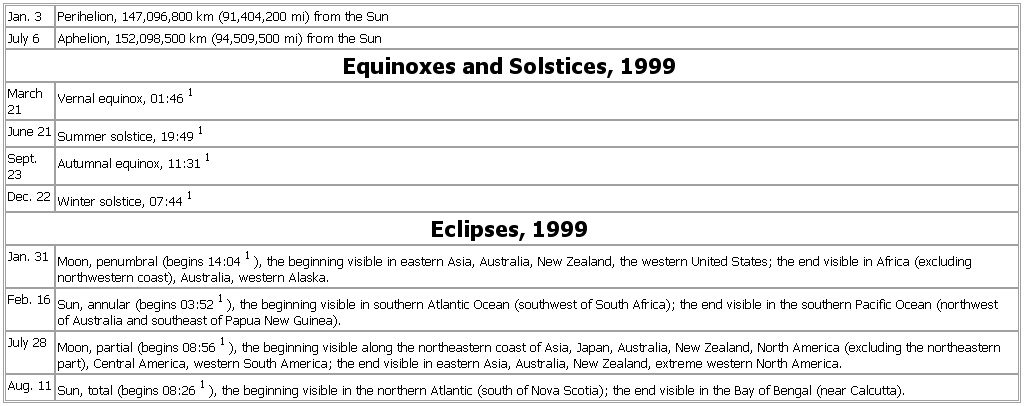- Earth Perihelion and Aphelion, 1999
-
▪ 1999Earth Perihelion and Aphelion, 1999Jan. 3 Perihelion, 147,096,800 km (91,404,200 mi) from the SunJuly 6 Aphelion, 152,098,500 km (94,509,500 mi) from the SunEquinoxes and Solstices, 1999March 21 Vernal equinox, 01:461June 21 Summer solstice, 19:491Sept. 23 Autumnal equinox, 11:311Dec. 22 Winter solstice, 07:441Eclipses, 1999Jan. 31 Moon, penumbral (begins 14:041), the beginning visible in eastern Asia, Australia, New Zealand, the western United States; the end visible in Africa (excluding northwestern coast), Australia, western Alaska.Feb. 16 Sun, annular (begins 03:521), the beginning visible in southern Atlantic Ocean (southwest of South Africa); the end visible in the southern Pacific Ocean (northwest of Australia and southeast of Papua New Guinea).July 28 Moon, partial (begins 08:561), the beginning visible along the northeastern coast of Asia, Japan, Australia, New Zealand, North America (excluding the northeastern part), Central America, western South America; the end visible in eastern Asia, Australia, New Zealand, extreme western North America.Aug. 11 Sun, total (begins 08:261), the beginning visible in the northern Atlantic (south of Nova Scotia); the end visible in the Bay of Bengal (near Calcutta).See as table:
 1Universal time.Source: The Astronomical Almanac for the Year 1999 (1998).
1Universal time.Source: The Astronomical Almanac for the Year 1999 (1998).* * *
Universalium. 2010.
